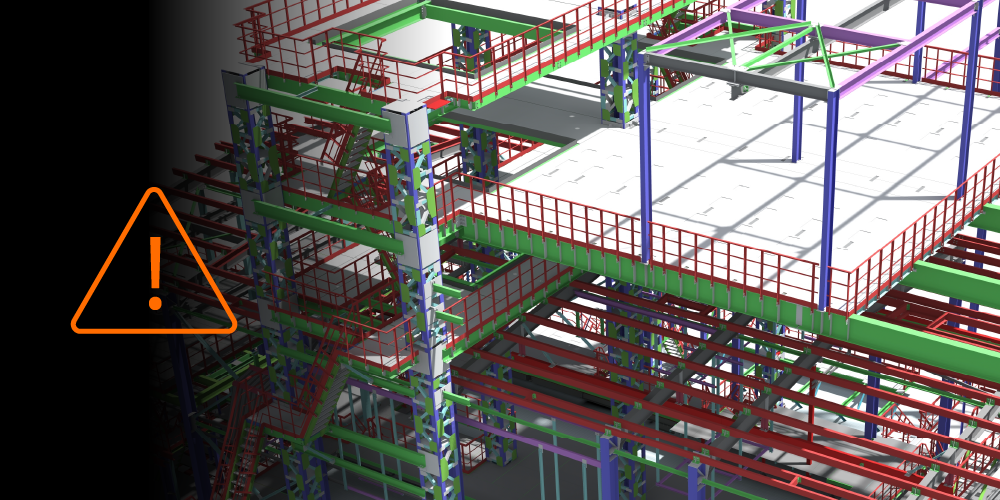Related Articles
— 7 min read
Understanding Construction Accounting: How It Supports Cost Control and Compliance

Last Updated Sep 30, 2025

Josh Krissansen
47 articles
Josh Krissansen is a freelance writer with two years of experience contributing to Procore's educational library. He specialises in transforming complex construction concepts into clear, actionable insights for professionals in the industry.
Last Updated Sep 30, 2025

Construction accounting in Australia is evolving as projects grow in value, complexity, and risk. From multi-year infrastructure builds to high-density commercial developments, contractors are under pressure to deliver financial precision in an environment shaped by fluctuating material costs, shifting regulations, and tight labor markets.
For project leaders, this isn’t just about balancing the books. It’s about safeguarding cash flow, protecting margins, and ensuring compliance across every contract and site. Construction accounting provides the framework to track job-level performance, manage contract variations, and align financial decisions with delivery realities on the ground.
This article examines how construction-specific accounting practices work in Australia, why they matter for cost control and compliance, and how technology is transforming the speed and accuracy of financial management across complex builds.
Table of contents
What is Construction Accounting?
Construction accounting provides the financial structure to manage costs, cash flow, and profitability on complex, high-risk projects. It applies standard accounting principles through a project-based lens tailored to construction delivery.
Unlike general accounting, construction accounting includes specialised tools and workflows that give project teams greater visibility and control across the job lifecycle.
Core practices include:
- Job costing: Tracks all labour, material, and equipment costs at the project level to spot overruns early and support accurate cash flow forecasting
- Progress billing and retainage: Aligns revenue recognition with staged delivery and payment holdbacks to maintain steady cash flow
- Work-in-progress (WIP) reporting: Measures earned value against budget and program to detect margin erosion in real time
- Cost categorisation: Distinguishes between direct, indirect, fixed, and variable costs to improve financial clarity
- Contract-based accounting: Adapts to fixed-price, cost-plus, and unit-rate agreements
When embedded into project workflows, construction accounting enables outcomes like:
- Accurate costing that informs tenders and protects margins.
- Clear cash flow forecasting to prevent payment gaps and delivery slowdowns.
- Real-time financial insights to guide operational and commercial decisions.
- Compliance with Australian tax, retention, and reporting requirements.
How is Construction Accounting Different from Regular Accounting?
General accounting systems can’t handle the contract complexity, irregular cash flow, and mobile operations of construction delivery. Construction accounting addresses these realities by tracking job-level performance, adapting to varied contract structures, and supporting decision-making in high-risk environments.
Unlike general accounting, it reflects the operational realities of construction projects.
Project-Based Financial Management
In construction, every project operates as its own profit centre with unique risks, schedules, and contractual obligations. Tracking financials independently allows leaders to measure true performance and protect margins on each job.
Extended Timelines and Unpredictable Cash Flow
Significant upfront costs, combined with milestone billing, change orders, and retention, can create extended gaps between delivery and payment. Without careful cash flow forecasting, these gaps can strain operations and delay future work.
Mobile and Decentralised Operations
Projects run across rotating job sites, each with its own regulatory, environmental, and logistical conditions. Tracking labour, materials, and equipment as they move between locations is essential to prevent losses, avoid compliance gaps, and keep schedules intact.
Complex Contracts and Billing Structures
Construction contracts include progress claims, milestone payments, and retainage.
Frequent change orders alter scope and value mid-delivery, and accounting systems must capture contract adjustments in real time to maintain accuracy and compliance.
Job-Level Profitability Tracking
Each job operates as its own profit centre. Job costing and WIP reporting are essential for understanding margin, risk exposure, and delivery performance—visibility a general ledger alone cannot provide.
Standard accounting systems are not equipped to support construction contract logic, delivery risks, and cash flow volatility. A specialised approach is essential to maintain control and profitability across multiple active projects.
Construction Accounting 101: A Look at the Key Components
Mastering these core components of construction accounting allows project leaders to control costs, stay compliant, and protect margins across every active job.
Job Costing and Project-Based Ledgers
Job costing tracks every cost and revenue item for a specific project in a dedicated ledger, separate from the general ledger. Coding costs by category and measuring them against budget in real time allows teams to spot overruns early and adjust delivery plans. Over time, this data sharpens tender estimates, flags recurring delivery risks, and strengthens margin control.
Revenue Recognition in Construction
Revenue is typically recognised using one of two methods:
- Percentage of completion: This measure matches income and expenses to project progress, offering a more accurate picture of performance and cash flow.
- Completed contract: This approach delays recognition until handover, simplifying reporting but increasing income volatility.
The choice of method affects tax reporting, profit visibility, and strategic planning. Accounting systems must align with the chosen model and reflect project-specific timelines.
Types of Construction Contracts
Contract types influence billing processes and accounting requirements:
- Lump sum: Fixed total price for the full scope of work
- Time and materials: Charges based on actual labour and material costs, often with caps
- Unit price: Repeatable work units billed at agreed rates
- Guaranteed maximum price (GMP): Reimbursed costs up to a defined ceiling
- Cost-plus: Actual costs plus a margin or fixed fee
Each contract type requires tailored accounting treatment to manage revenue, cost tracking, and scope changes.
Billing, Retentions, and Change Orders
Progress billing
Invoices are based on completed work, measured against a schedule of values or percentage of completion, to keep cash flow aligned with delivery.
Retentions
Typically 5–10% of each payment is withheld until completion. Tracking retention separately ensures compliance with state laws and prevents surprise payment delays at closeout.
Variations
Approved variations adjust scope, cost, or timeline after work has commenced. Accounting systems must capture and reflect these changes to ensure accurate billing and avoid margin erosion.
Compliance and Regulatory Obligations
Construction businesses must meet a wide range of statutory and regulatory requirements:
- National Construction Code (NCC): The NCC governs building standards and safety
- Work health and safety laws: Require Safe Work Method Statements (SWMS) for high-risk tasks
- Licensing: Varies by state and applies to both head contractors and trades
- Tax obligations: Include GST, income tax, and contractor payment reporting
Non-compliance can halt work, delay payment, and damage client trust. For example, failing to meet state-specific retention rules can lock up significant sums in unpaid claims until disputes are resolved.
Leveraging Technology for Construction Accounting
With multiple jobs running across different sites, manual accounting systems can’t deliver the speed or accuracy needed for real-time decision-making.
Purpose-built construction accounting platforms centralise cost data, automate billing workflows, and link financial records to project schedules — giving leaders the visibility to act before small issues become costly overruns.
Centralised Job Cost Tracking
Real-time cost tracking links every expense — from subcontractor invoices to fuel charges — to the correct job and budget code. Centralised ledgers not only prevent data duplication, they also create a historical record that sharpens future estimates and reduces bid risk. For example, tracking true equipment utilisation across multiple jobs can reveal whether to rent, redeploy, or purchase for the next project.
Integration with Project Management Systems
Modern accounting platforms integrate with scheduling, resourcing, and communication tools. This creates a shared environment where project managers, finance teams, and clients operate with the same real-time data.
Financial records are linked to program timelines and resource plans, allowing teams to monitor how delays and scope changes affect budget and cash flow. A unified platform improves coordination, reduces errors, and supports proactive control across delivery phases.Progress Billing and Retention Management
Invoicing tools can auto-generate progress claims from completion data or schedules of values, and calculate retention automatically. Stored materials and retention amounts are carried forward without manual re-entry, reducing billing errors and accelerating payment cycle
Change Order Visibility and Tracking
Integrated change management tools help document and approve scope, cost, and time variations. Teams can record changes early, track their impact, and adjust budgets before disputes arise.
Approved change orders flow through to contract values and project forecasts, protecting margin and ensuring accurate billing.Compliance and Record Keeping
Accounting platforms support compliance with Australian tax, safety, and reporting requirements. Teams can manage GST, SWMS documentation, inspection logs, and issue registers from a central platform.
Digital records are audit-ready, searchable, and reduce reliance on paper-based systems. Built-in compliance checks help identify risks early and ensure alignment with statutory obligations.
Technology transforms accounting from a reactive process into a real-time control system. Integrated platforms help construction businesses increase efficiency, reduce risk, and make data-driven decisions that protect margin and drive growth.
Construction accounting is essential for cost control, compliance, and long-term project success
Construction accounting gives project leaders the tools and processes to track costs, manage cash flow, and stay compliant across complex builds. In Australia’s high-risk, contract-driven market, it provides the financial visibility needed to protect margins and make informed decisions from tender to closeout.
Categories:
Written by

Josh Krissansen
47 articles
Josh Krissansen is a freelance writer with two years of experience contributing to Procore's educational library. He specialises in transforming complex construction concepts into clear, actionable insights for professionals in the industry.
View profileExplore more helpful resources

Managing Direct Costs in Construction: How Visibility Drives Profitability
Direct costs define the financial reality of every construction project. They cover the labour, materials, and equipment that drive delivery and determine profitability. But even the best-planned budgets can shift...

BIM Clash Detection: Reducing Rework, Delays, and Risk in Construction
Design clashes can be a significant hidden cost in construction, as each conflict between systems risks expensive rework, project delays, and reduced margins. BIM clash detection empowers teams to identify...

Next-Gen Job-Costing: Ready to Move? 5 Things to Consider Before You Get Started
In this three-part series, Quantity Surveyor turned Financial Solutions Specialist Clint Burgess uncovers the real-world gains for people, processes, and profits when businesses move from legacy to next-generation Enterprise Resource...

From Workarounds to Workflow: Solving Construction’s Legacy Job-Costing System Challenges with Next-Gen Tools
In this three-part series, Quantity Surveyor turned Financial Solutions Specialist Clint Burgess uncovers the real-world gains for people, processes, and profits when businesses move from legacy to next-generation Enterprise Resource...
